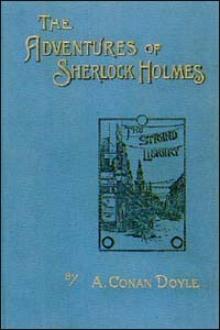My Autobiography, Charles Chaplin [books to read in your 20s .TXT] 📗

- Author: Charles Chaplin
Book online «My Autobiography, Charles Chaplin [books to read in your 20s .TXT] 📗». Author Charles Chaplin
It evolved from a story of a clown who, through an accident at the circus, has lost his sight. He has a little daughter, a sick, nervous child, and when he returns from the hospital the doctor warns him that he must hide his blindness from her until she is well and strong enough to understand, as the shock might be too much for her. His stumblings and bumpings into things make the little girl laugh joyously. But that was too ‘icky’. However, the blindness of the clown was transferred to the flower-girl in City Lights.
The sub-plot was a notion I had been toying with for years: two members of a rich man’s club, discussing the instability of human consciousness, decide to experiment with a tramp whom they find asleep on the Embankment. They take him to their palatial apartment and lavish him with wine, women and song, and when he is dead drunk and asleep they put him back where they found him and he wakes up, thinking it has all been a dream. From this idea came the story of the millionaire of City Lights who befriends the tramp when he is drunk and ignores him when he is sober. This theme motivates the plot and enables the tramp to keep up the pretence with the blind girl that he is rich.
After a day’s work on City Lights, I used to go to Doug’s studio and take a steam bath. Many of his friends – actors, producers and directors – gathered there and we would sit around sipping our gin and tonics, gossiping and discussing talking pictures. The fact that I was making another silent film surprised most of them. ‘You have a lot of courage,’ they said.
In the past my work had usually stimulated interest among producers. But now they were too preoccupied with the success of the talkies, and as time went on I began to feel outside of things; I guess I had been spoiled.
Joe Schenck, who had publicly expressed his dislike for talkies, was now won over to them. ‘They’re here to stay, I’m afraid, Charlie,’ and he would hypothesize that only Chaplin could pull off a successful silent picture. This was complimentary but not very comforting, as I did not wish to be the only adherent of the art of silent pictures. Neither was it reassuring to read magazine articles expressing doubts and fears for the future of Charlie Chaplin’s film career.
Nevertheless, City Lights was an ideal silent picture, and nothing could deter me from making it. But I was up against several problems. Since the advent of talkies, which had now been established for three years, the actors had almost forgotten how to pantomime. All their timing had gone into talk and not action. Another difficulty was to find a girl who could look blind without detracting from her beauty. So many applicants looked upwards, showing the whites of their eyes, which was too distressing. Fate, however, played into my hands. One day I saw a film company at work on the Santa Monica beach. There were many pretty girls in bathing suits. One waved to me. It was Virginia Cherrill, whom I had met before.
‘When am I going to work for you?’ she said.
Her shapely form in a blue bathing suit did not inspire the thought of her playing such a spiritual part as the blind girl. But after making one or two tests with other actresses, in sheer desperation I called her up. To my surprise she had the faculty of looking blind. I instructed her to look at me but to look inwardly and not to see me, and she could do it. Miss Cherrill was beautiful and photogenic, but she had little acting experience. This is sometimes an advantage, especially in silent pictures where technique is all-important. Experienced actresses are sometimes too set in their habits, and in pantomime the technique of movement is so mechanical that it disturbs them. Those with less experience are more apt to adapt themselves to the mechanics.
I had a scene of the tramp avoiding a traffic jam by walking through a limousine and getting out the other side. When he slams the door, the blind flower-girl hears it and offers her flowers, thinking he is the owner of the car. With his last half-crown he buys a button-hole. Accidentally he knocks the flower from her hand and it falls to the pavement. On one knee she gropes around to pick it up. He points to where it is. But she continues groping. Impatiently he picks it up himself and looks at her incredulously. But suddenly it dawns on him that she cannot see, and, passing the flower before her eyes, he realizes she is blind and apologetically helps her to her feet.
The whole scene lasted seventy seconds, but it took five days of retaking to get it right. This was not the girl’s fault, but partly my own, for I had worked myself into a neurotic state of wanting perfection. City Lights took more than a year to make.
During the filming of it the stock market crashed. Fortunately, I was not involved because I had read Major H. Douglas’s Social Credit, which analysed and diagrammed our economic system, stating that basically all profit came out of wages. Therefore, unemployment meant loss of profit and a diminishing of capital. I was so impressed with his theory that in 1928, when unemployment in the United States reached 14,000,000,1 sold all my stocks and bonds and kept my capital fluid.
The day before the crash I dined with Irving Berlin, who was full of optimism about the stock market. He said a waitress where he dined had made $40,000 in less than a year by doubling up her investments. He himself had an





Comments (0)